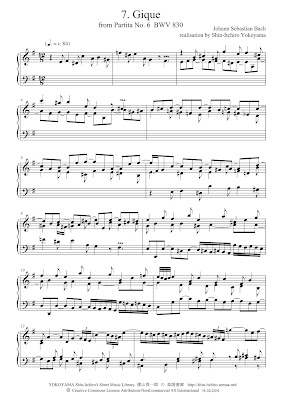5th Suite in C minor BWV 1011
Allemande
Bar 25, first bass note: since Dotzauer (1826), most editions (except New Bach Edition, Icking, Henle, etc.) had been taking b♭,
Dotzauer (the highest note of the chord is written in scordatura, so it sounds a♭):
Kellner:
Anna Magdalena Bach:
It is difficult to understand this chord because there are only three notes (except Kellner, the highest notes are written in scordatura, so the chord is g-d-a♭). But in the Lute arrangement (in G minor), Bach wrote five notes. So we can understand easily this chord (upper staff is in tenor clef, lower staff is in bass clef, then they are d-f-a-c-e♭).
Transposed in C minor; then we have g-b♭-d-f-a♭:
Therefore also in Bach's autograph of Cello Suites, the bass note must have been g, not b♭. But in the New Bach Edition, Revised Edition (NBA rev. 4) , the editor (Andrew Talle) wrote "the bizarre chord" (page XLIV) and had changed it again into b♭, although in the New Bach Edition (not revised / 1988), Hans Eppstein wrote it correctly g, for the first time since Dotzauer.
This chord is not "bizarre". I will explain it.
As we see above, first chord is dominant 7th on the tonic, and second chord (as we see in the Lute arrangement) is dominant 7th on the mediant (third degree of the scale). It is less frequent compared to first one, but sometimes is used. These chords resolve into the next chords in small notes.
Transposed in C major for easy understanding:
We can see this chord in the other works of Bach (I have found 10 examples, 14 places), but before that, I will show you two examples from French composer, François Couperin's works.
From Second Ordre, Allemande "La Laborieuse", bar 23:
Leçons de ténèbres, Troisième Leçon à deux voix "Mem":
And then, from Bach's works; for example:
The Well-Tempered Clavier, Book 1-7 E♭ major, Prelude bar 18, 21, 50:
The Well-Tempered Clavier, Book 2-3 C♯ major, Prelude bar 11: 1st chord. I transposed it in C major and added the reduction of harmony written by J. S. Bach himself (BWV 872a):
The Well-Tempered Clavier, Book 2-16 G minor, Prelude bar 12: 1st chord:
One more example from The Well-Tempered Clavier, Book 2-21 B♭ major, Prelude bar 58:
Flute Sonata in B minor (BWV 1030), 2nd movement, bar 13 (Bach's autograph):
Another example from St. Matthew Passion: Finale, bar 11 (and bar 23, 91, 103, the same):
Mass in B minor: Gloria, bar 56:
One more example from Mass in B minor: Quoniam, bar 14 and 91 (musically the same; here is a example of bar 91).


















































